
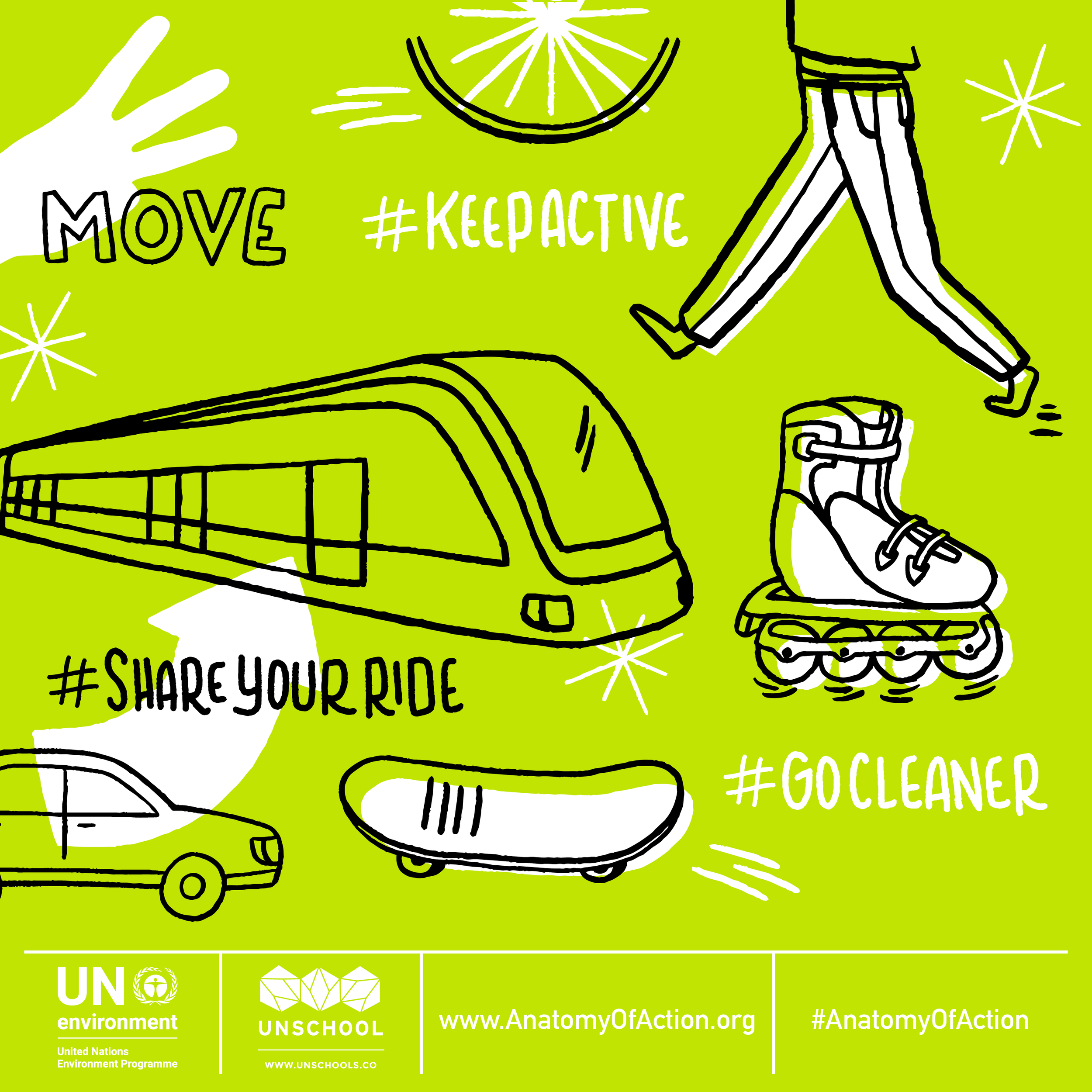
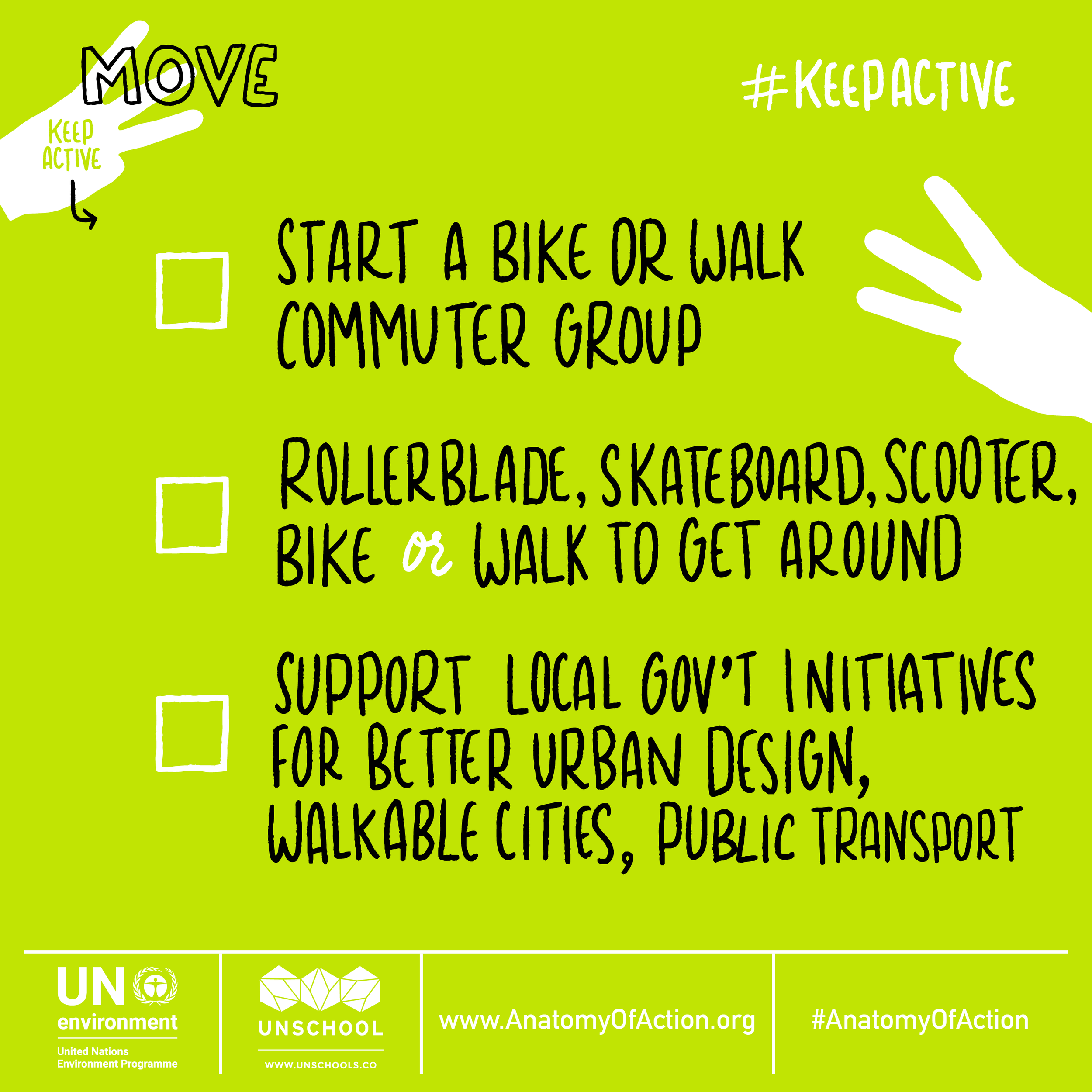


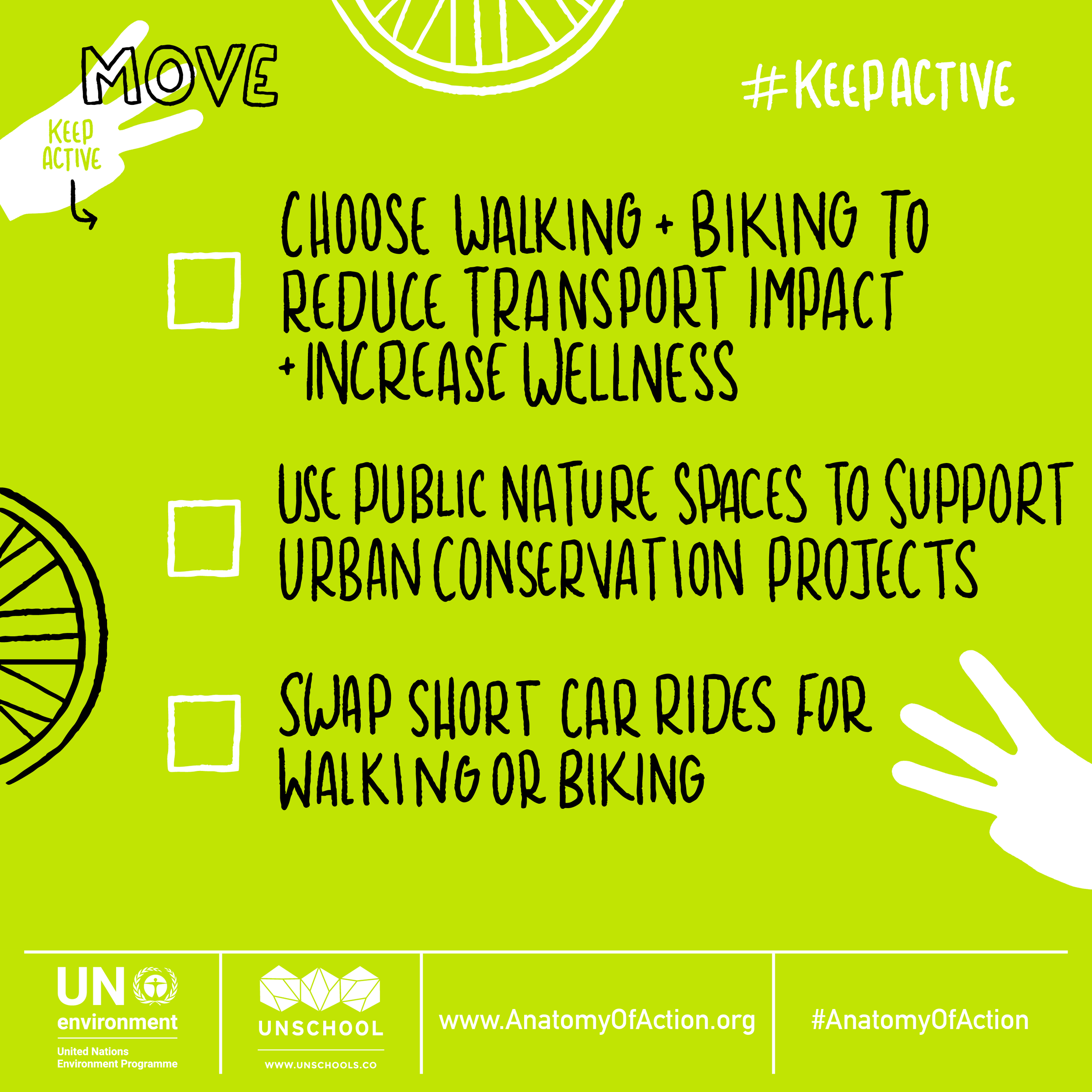
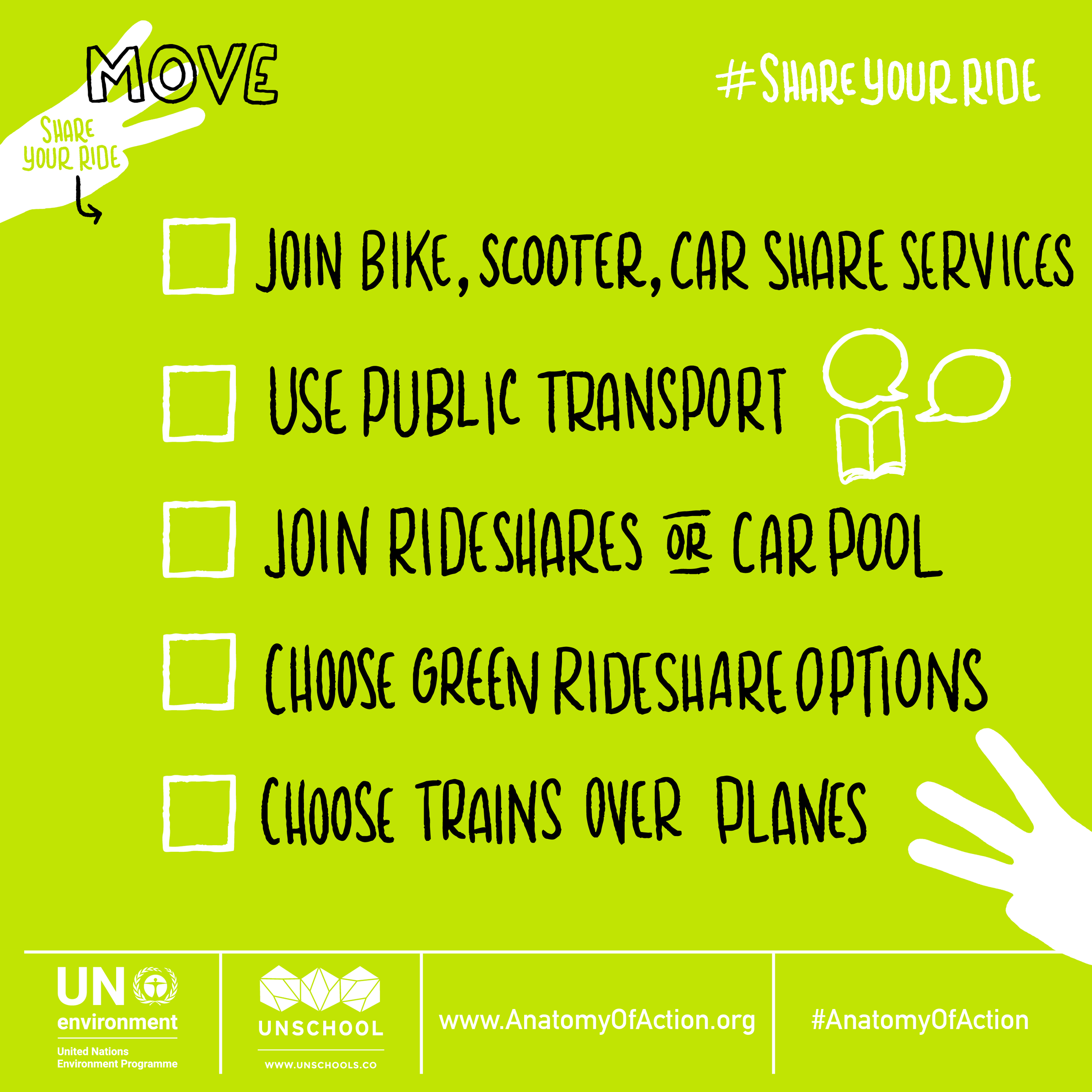



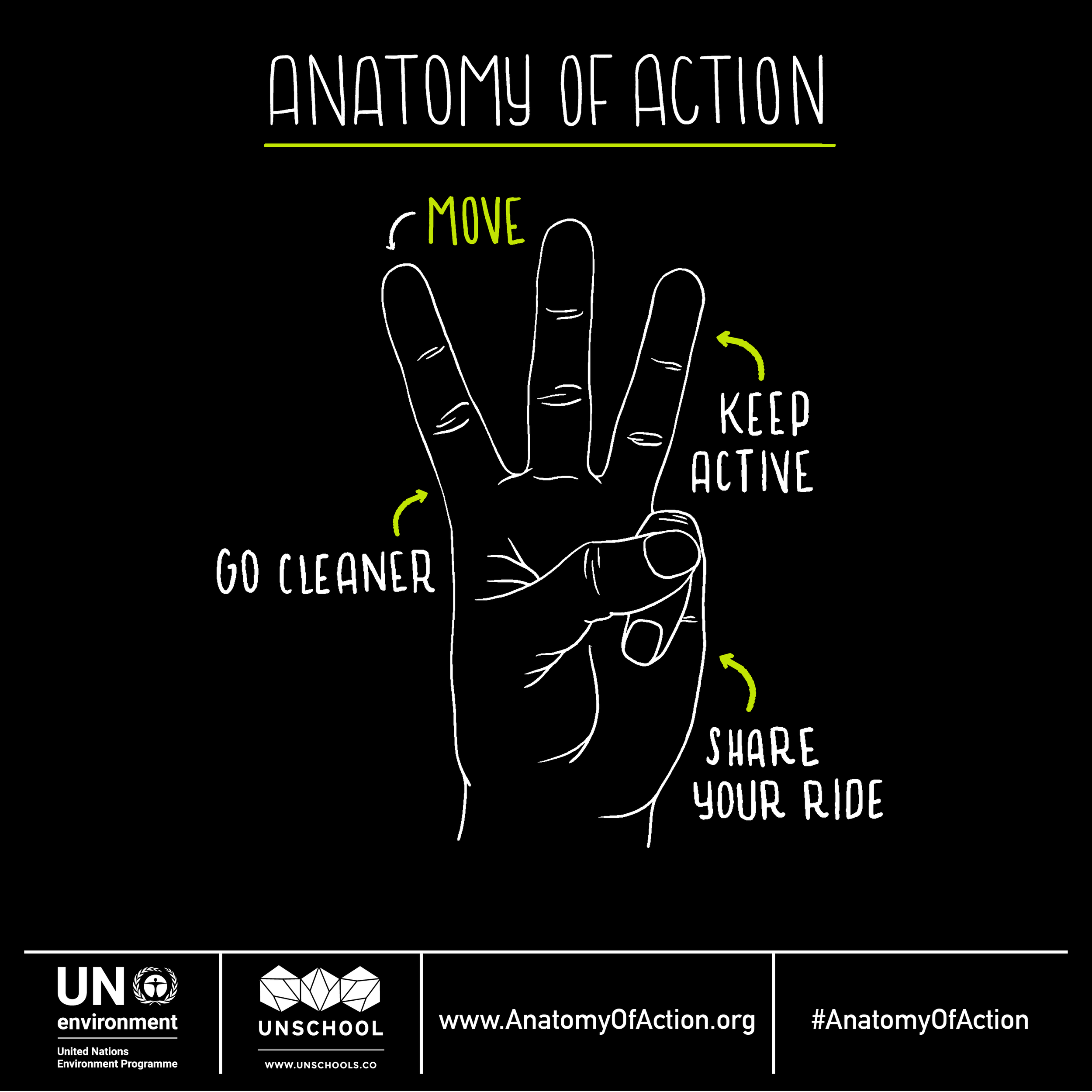
THE 3 KEY ACTIONS
KEEP ACTIVE
Keep or take up walking and cycling to work and advocate for your government and local businesses to provide more sustainable and safer public transport options
SHARE YOUR RIDE
Continue or opt for public and shared transport instead of driving, and advocate for more options
GO CLEANER
Swap to options like electric vehicles, cleaner fuels, and fewer kilometers to reduce your transport footprint

HOW-TO: KEEP ACTIVE
Keep or take up walking and cycling to work and advocate for your government and local businesses to provide more sustainable and safer public transport options
Swap short drives for walks or bike rides (or learn to rollerblade, skateboard, or scooter if you want a cooler way to get around)
Give your productivity and personal wellness a boost by walking or cycling instead of taking short personal car rides
Engage with green space and support urban conservation projects in your community by using public nature spaces for moving around, like using bike paths
Pre-check and choose routes for walkability, give yourself extra time and get exercise, increase your health and wellness, and reduce your transport impact
Start a group of people commuting to work at the same time to make a walking or bike bus if safety is of concern
Support local government initiatives to introduce better urban design, walkable cities, and mass public transport systems
WHY IS KEEPING ACTIVE SO IMPORTANT?
Using your body to get around is great for a variety of reasons; it’s cheap, clean, and good for your health, and its implementation often increases road safety. By just cycling to work, you reduce your chance of cancer by 45% and cardiovascular disease by 46%. In many places around the world, walking and cycling are the norm, but more can be done to enhance infrastructure. Introducing sidewalks in a city can reduce serious traffic injuries by 25%. Personal car transportation contributes huge impacts to air pollution and to your carbon footprint, so whenever you can, swap your car rides to human-powered transport options to help reduce these stats and to encourage a shift in the way we design cities and move around them.
SHOW ME THE SCIENCE!























HOW-TO: GO CLEANER
Swap to options like electric vehicles, cleaner fuels, and fewer kilometers to reduce your transport footprint
Explore all the options available to you for getting around, and find which ones have the least impact
Adjust your routes so that you are going the least distance
Swap short distance drives for alternative modes of transport
Look for and ask about flexible working options to reduce your commute, such as working from home, video conferencing, or later start times
See if there are leasing services where you can give an electric car or bike a try
Swap your fossil fuel car to an electric one
Use cleaner fuel when you can
Support government or business initiatives that provide alternative fuel and cleaner transport options for your community
WHY IS GOING CLEANER SO IMPORTANT?
We all have to get places, and the impact we each have on climate change and air pollution is directly attributed to our transport choices. You can opt to drive less, share your ride, and swap to electric. Added benefits of reducing your car dependence is cost and time savings, along with better air quality, lower noise, and less congestion issues. Globally we are seeing a rise in electric vehicle use and charging stations, so now is a great time to find ways of swapping to electric. Try a car out through a leasing or car share service to see how easy electric can be.
SHOW ME THE SCIENCE!




































